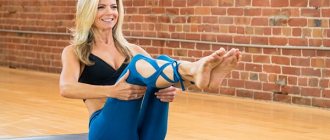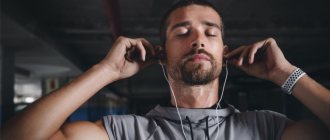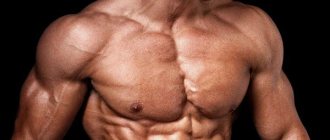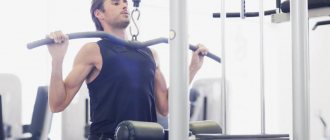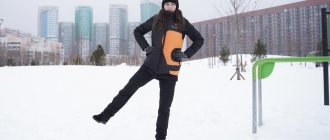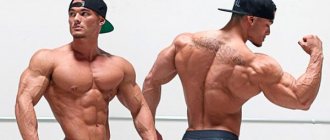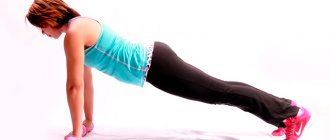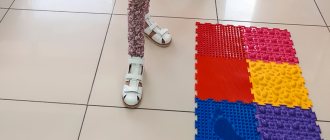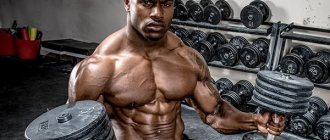You've probably heard about Pilates - famous singers and actors from all over the world practice it, and your nearest fitness center definitely has a special room and trainers for this system.
But few people will say exactly what the essence of Pilates is and how it differs from regular fitness. Is it true that it is similar to yoga? Is it difficult to do it? Who is it suitable for?
World and European synchronized swimming champion, Honored Master of Sports, current Pilates and yoga instructor (20 years of experience in the fitness industry) Natalia Gruzdeva .
Pilates appeared more than 100 years ago
The inventor of Pilates, Joseph Pilates, was born in 1883 in Mönchengladbach, Germany. Joseph grew up as a very sick and weak boy, suffering from asthma, rickets and rheumatic fever. His father Friedrich, who was involved in gymnastics and weightlifting, believed that healing could come through physical activity. And it really helped - by the age of 14, Joseph became strong and practically forgot about his old illnesses. His body became so perfect that the boy was even invited to pose for an anatomical atlas.
Pilates fell in love with sports: he did martial arts, yoga and gymnastics. Joseph stayed in Germany until he was 32 years old, working as a physical education coach at a local school. In 1912, he moved to England, where he made a living in every possible way: he performed in the boxing ring, was a circus performer, and even taught self-defense to Scotland Yard detectives.
At the same time, Joseph begins to develop his own system of exercises. He understands that physical activity alone is not enough for the full development of a person; a spiritual component is also needed, therefore he combines exercises with the philosophy of martial arts and meditation.
During the First World War, Pilates helped wounded soldiers in hospitals in England, while simultaneously trying out his own training system. He even equipped some beds with special springs that were attached to the wall. And thanks to the Pilates system, fighters recovered from injuries much faster.
In 1926, Joseph moved to the United States and opened his own studio in New York. His training system quickly became popular - so much so that ballet, dance, theater and film stars began to appear in his studio.
Gymnastics, of course, was not something new for anyone. What attracted people to the invention of Pilates was something else – the combination of physical exercise and a whole philosophical system.
How to choose a Pilates ring
Before purchasing, be sure to make sure that the handles are tightly fixed to the hoop and do not slip. Otherwise, you will not be able to perform most exercises well.
The second important point is the load created by the simulator. Rings are produced with varying degrees of resistance. This is necessary to reach athletes of all levels of development. If you are a beginner, ask your salesperson to select an isotonic ring with minimal resistance.
Popular models and approximate prices:
- Svarog SVYP-300 (700 RUR);
- StarFit FA-402 (700 RUR);
- Yamaguchi Ring Fit (RUR 1,900);
- Torres YL5004 (RUR 530);
- Fittools FT-Pilates-Ring (900 RUR);
- Atemi APR02 (700 RUR).
We recommend buying a Pilates ring in sports stores, where you can evaluate the quality of workmanship and get advice from the seller. Exercise machines can also be purchased on specialized websites or online trading platforms.
Pilates is not just a workout, but also its own philosophy
Pilates himself called the developed system controlology - from the word control, since the main thing in it, according to Joseph’s idea, was precisely control over one’s body and mind. Pilates believed that “the body is created by the mind” and without proper psychological preparation there is practically no point in physical exercise.
In his opinion, one of the biggest problems of modern man is that he is completely unable to control his mind. The brain works as if on its own, thoughts come and go, and the person not only cannot follow it, but does not even try. But if you combine physical training and mental training, if during gymnastics you concentrate on the part of the body on which the exercise is performed, the result will be incredible.
Pilates was confident that the human body has enough resources to heal almost any injury and disease, we just don’t use it because we don’t know how.
At the same time, Pilates did not have a clear system of physical training. Joseph developed 34 gymnastic exercises, but did not force anyone to do only them - people were free to choose for themselves how to load their own body. The essence was precisely in the approach to training, the combination of psychology and physical work, and a certain attitude towards preparation in general.
Natalia Gruzdeva: “Pilates is, in principle, about effective movements. We do not control the mind through physical exercise, but through intelligent movement we perform the exercises with full efficiency.
How much stability is needed, how much mobility is needed - we do exactly as much as a person needs for him to function, live, be healthy, active and perform not only everyday tasks, but also engage in any other sports.”
But the term “controlology” never came into use and was quickly forgotten. And the Joseph Pilates exercise system is now known throughout the world under the name of the inventor - Pilates.
Principles of the technique
It is important to correctly understand the purpose of Pilates, which is aimed at developing functional muscles, thereby ensuring the performance of the body as a whole. Muscle elasticity and strength are achieved by the following techniques:
- eccentric muscle contractions;
- safe increase in muscle length and flexibility;
- increasing the range of joint mobility.
Pilates does not build defined muscles like strength training. But it makes the body more mobile and flexible thanks to the development of deep muscles of the abdomen, back, pelvis, helps to train a strong abs, flexible correct posture. When these muscles are developed, the body automatically aligns, the neck and shoulders relax, and each joint fully performs its functions.
In addition, an integral part of the technique is intellectual control over physical activity, mandatory adherence to hygiene rules, and a rational sleep and wakefulness regime.
What is its essence?
Pilates is a comprehensive system of body development based on gymnastics, yoga, tai chi (a type of wushu) and several other eastern traditions.
The essence of Pilates is dynamic exercises without overexertion, performed at a slow pace along with breathing exercises and mind control. The movements are performed gently, without sudden changes in exercises.
Pilates has six basic principles:
• Concentration – focusing deeply on your body during exercise. While performing the exercise, you need to concentrate on the muscle you are working on.
• Centering – special attention to the center of the body, which means the muscular corset, rectus and transverse abdominal muscles. Exercises are performed with a tucked stomach and a straight back.
• Control – constant concentration on the correct execution of exercises, monitoring your thoughts, body position and posture.
• Breathing – breathing control. One of the most important principles of Pilates. You need to inhale as deeply as possible and slowly exhale completely.
• Precision – exercises should be performed exactly as needed. There is no point in doing more, trying to pump up the body faster. Relaxation will not produce the desired result either.
• Smoothness – all movements must be performed slowly and smoothly, fluidly. You can’t rush, it’s important to feel how the muscles work, make them work as hard as possible, but not overexert yourself.
The most important thing in Pilates is strict adherence to all six principles. If you forget even one, then the whole technique will collapse and will not work as it should. Otherwise, it will just be fitness with Pilates elements. Self-control and discipline are the basis of success.
Regular training is also important. Single exercises will not give an effect, you need consistency.
"A hundred"
This exercise is not suitable for those who are trying to get six-pack abs, but any beginner can do it. “The Hundred” is aimed at strengthening the muscles of the legs, arms, back and core, helping to reduce waist size and tighten the stomach.
During the exercise, try not to overstrain your neck or press it to your chest, also do not rush, do not swing your arms and do not lift your lower back from the floor.
Everyday stretching for beginners. Favorite exercises of actress Angelina Strechina
Technique:
- Lie on the floor so that your spine is pressed to the floor.
- Leave your legs bent on the floor or lift them up in the same position.
- Extend your arms straight and make five slow strokes while inhaling and exhaling.
- Swing your arms five times as you inhale and five as you exhale.
Do this exercise 50-100 times.
What does Pilates develop?
Regular Pilates classes strengthen the entire body, develop muscle corset and help recover from injuries.
Benefits of Pilates:
• Increases body flexibility.
• Increases strength.
• Develops the muscular corset (core), which helps prevent injuries.
• Improves blood circulation.
• Improves breathing, increases lung capacity.
• Teaches you to feel your body, control your thoughts and mind.
• Helps fight stress, improves sleep.
• Restores muscles and body after injury, which is especially important for athletes.
Natalia Gruzdeva: “How much can Pilates help with recovery from injury? Much. Many issues are resolved with the help of effective movements, especially after injuries and operations, where adequate motor activity was impaired.
As a professional athlete and coach, I have encountered both ballerinas and football players who felt better after Pilates because the movements took on a completely different form.
I can also say about myself that after leaving big sport there is always a baggage of professional ailments. And as soon as Pilates appeared in my life, many issues with long-term injuries went away along with the training.”
The benefits of these types of fitness
Regular classes of both yoga and Pilates have a powerful healing effect on the body: they tidy up the functioning of internal organs, joints and muscles.
The benefit lies in several aspects:
- increases flexibility, mobility and strength of joints;
- posture and condition of the spinal column improves;
- pain in the neck and back disappears;
- general well-being improves;
- immunity increases;
- hormonal levels are normalized;
- sexual health improves;
- performance increases.
Yoga also has a positive effect on mental health:
- allow you to achieve spiritual peace;
- learn to manage your emotions;
- help you gain a sense of confidence in yourself and the world around you.
Indian practice is often used to treat depression, mental disorders, and persistent insomnia. Read more about the benefits of yoga in this article.
Pilates brings the condition of the spine to a physiological norm, eliminates tension, and rebuilds the functioning of the muscles that support it. Thanks to this “restructuring,” the condition of the entire organism as a whole improves. The benefits of yoga are more multifaceted - systematic practice leads to a balance of physical and psychological health.
Do you need exercise equipment?
Training takes place both with the use of special simulators and without them.
Pilates itself developed a number of machines called GRATZ, which are still manufactured in the USA to this day. In many ways they resemble those beds with straps and springs that Joseph made for wounded soldiers in England.
Natalia Gruzdeva: “In the Pilates system, exercise machines are not those machines that provide some kind of resistance, but, on the contrary, give feedback. Due to the fact that we perform exercises with them, we receive feedback for our nervous system so that our movement itself is more intelligent and effective.
The machines in Pilates are different from those on which we pump biceps, triceps, and so on. There are different tasks here. When there are simulators, it’s great, it’s an addition, our ally and assistant in more effective development. But if there are no machines, then there is a whole system of Pilates on mats.
Pilates for a flat stomach (advanced)
An advanced Pilates workout includes a set of slightly more challenging exercises. They are aimed at harmonizing brain and muscle activity, which is very useful for athletes involved in weight training. The elements also help to correct the correct physiology of movements, which is used by a person during daily activity.
Perform the suggested exercises slowly, with full concentration on the muscles. In this training, it is not speed or quantity that is important, but the quality of execution. Rest between exercises for 10-15 seconds.
Hundred with straight legs
What is the benefit : This variation of the hundred is complicated by the fact that the legs are no longer held in a bent position, but in an extended position at an angle of 45 degrees from the floor. This significantly increases the load on both the abs and quadriceps.
How to do it : Lie on your back and raise your outstretched legs 45 degrees from the floor. The head is also slightly raised. Stretch your arms lengthwise, then begin to intensively raise and lower them, while maintaining the accepted position of your torso and legs.
How much to do: 15-20 pulsations.
Double leg extension
What are the benefits : This Pilates exercise for the abdomen is carried out with constant tension in the abdominal muscles, so it contributes not only to the development of relief, but also the strength of the corresponding group. It also stimulates digestive processes and strengthens the quadriceps.
How to do it : Work is done lying on your back. Place your arms behind your head and slightly lift your upper body. The essence of the movement is to raise your legs to a level perpendicular to the floor. When lowering your legs, you don't need to lay them down completely. They must always remain suspended.
How much to perform: 10-12 repetitions.
Full crunches
What are the benefits : The element uses absolutely every muscle of the abdominal region and is quite technically complex. It is the large amplitude of movement that ensures its maximum efficiency.
How to do it : Lie on your back and extend your arms in front of you. After this, raise your body so that at the peak point you touch your feet with your fingers. Gently return to the starting position and perform the required number of repetitions using the same amplitude.
How much to perform: 10-12 repetitions.
Straight leg lowering
What is the benefit : Functional exercise with an emphasis on the lower abs. This version of the “scissors” strengthens not only the abdominal muscles, but also the thighs and buttocks, allowing you to tighten them and achieve a beautiful, attractive shape. If you feel discomfort while performing it, then place your palms under your buttocks.
How to do it : Lying on your back, raise your legs so that they are perpendicular to the floor. The lower limbs are extended. Hands folded at the back of the head, upper back slightly raised from the floor. Begin to lower your leg to the floor without touching it and gently lift it back up. Perform alternately on both sides.
How much to perform: 6-8 repetitions on each side.
Double Leg Stretch
What is the benefit : Another abdominal exercise that perfectly complements any workout (not just Pilates). The work involves the arms, legs and abs, becoming stronger and more resilient through active, repeated movements. The element also actively promotes stimulation of metabolic processes.
How to do it : Take a fetal position: lying on your back, pull your knees to your chest and clasp them with your arms. After this, straighten your limbs, making a rotational movement in a circle with your hands. Legs at an angle of 45 degrees to the floor. Pause for a second, return to the fetal position and repeat the exercise again.
How much to perform: 10-12 repetitions.
Reverse crunches
What's the benefit : This is a basic exercise for a flat stomach that is great for experienced athletes. It involves the entire abs, but the main emphasis is on the lower abdomen. The exercise should only be performed with proper preparation to avoid damaging your back.
How to do it : Lie on the floor, bend your knees. Begin doing reverse crunches by lifting your hips toward your chest and lifting your lower back off the floor. Feel the tension in your abdominal muscles. To avoid distortions of the torso, place your palms on the floor. This will stabilize your position, allowing you to maintain proper technique.
How much to perform: 10-12 repetitions.
Rifles
What's the benefit : Optimal movement for people who want to practice self-massage. Rolls warm up the spine, relieving pain and excessive tension. Additionally, the back muscles are stretched and relaxed, abdominal strength is developed, and overall balance and coordination are improved.
How to do it : Lying on your back, grab your knees with your hands and press your forehead to them. After this, move by rolling back and forth. Too large an amplitude of movement is not needed, so as not to overload the neck and lumbar region.
How much to perform: 10-12 repetitions.
Forearm-supported scissors
Why it benefits : The core element of the workout focuses the load on the lower abdomen, which is often a problematic area. This is a technically simple but effective exercise with which you will tighten problem areas of the abdomen and legs.
How to do it : Sit on the mat and lean on your forearms. Raise your legs slightly above the floor and begin performing low-amplitude scissors, moving your legs up and down. The body remains motionless.
How much to do: 14-16 leg raises.
Boat on your back
What is the benefit : With the help of the presented movement, you simultaneously load both the stomach (top and bottom) and the back. Additionally, the quadriceps and deltoid muscles are included in the work. This is one of the most effective exercises with maximum muscle work.
How to do it : Lie on your back and straighten up. Arms extended above head. After this, lift your body and knees, transferring your body weight to your buttocks. The legs are bent at the knees, the hands are reaching for the ankles. The balance at the peak of tension is maintained exclusively on the buttocks, which further develops the athlete’s coordination.
How much to perform: 10-12 repetitions.
Torso rotations in the corner position
What is the benefit : The exercise provides a similar effect to the previous element, however, in this case the main emphasis of the load is on the lateral parts of the abdomen. Due to this, the waist and sides area is intensively worked out.
How to do it : Sit on the floor. After this, move your body back and raise your extended legs so that both sides form a 90-degree angle with each other. Bring your arms in front of you, and then turn your torso, trying to touch the floor surface with your elbows.
How much to perform: 6-8 repetitions on each side.
Raising arms and legs in a corner position
What are the benefits : This is a difficult but super-effective core exercise. In addition to the static load on the abs, the element helps strengthen the pectoral muscles and adductor muscles of the hips. By systematically performing the exercise, you will be able to develop coordination and balance.
How to do it : Sit on the floor, raise your legs and lean your body back. Start spreading your arms and legs in different directions, then slowly bring them together, keeping your balance in the same position. Maintain a 90-degree angle between your body and legs throughout the movement.
How many to perform: 8-10 repetitions.
Lateral twist knee-elbow
What are the benefits : This version of twisting is a high-quality and safe exercise for developing the relief of the oblique muscles. The lateral parts of the thighs are also included in the work, which effectively helps in the fight against fat deposits on the legs.
How to do it : The work is carried out in a side plank with support on the right forearm and right knee. The left arm is raised above the head, the left leg is extended. Begin twisting by bringing your left knee and elbow together. Keep your balance and tighten your abdominal muscles.
How much to do: 10-12 repetitions, first on one side, then on the other.
"Superman"
What are the benefits : Exercise helps develop the strength of the lumbar region, strengthens the buttocks, and also forms correct posture, toning the paravertebral columns. The element is often used to prevent lumbar injuries, as well as to increase progress in deadlifting.
How to do it : Lie on your stomach and fully stretch. The specifics of the element are simple: you raise your arms and legs from the floor, making a short pause in the peak, and then lower your limbs back. Perform the exercise at a comfortable amplitude, gradually increasing the load.
How much to perform: 10-12 repetitions.
Advanced swimmer
What are the benefits : This version of the Pilates exercise provides the same benefits as real exercise in the pool. You strengthen your back muscles, back of your thighs, shoulder muscles, and also stimulate fat burning processes. During operation, the press is under constant tension, which ensures high efficiency for the abdomen.
How to do it : Lie on your stomach, then stretch your arms and legs along. The technique consists of intensive alternate lifting of opposite arms and legs. The exercise becomes more complicated due to additional static work, because the limbs do not fall to the floor.
How much to perform: 14-16 dilutions.
Hyperextension with abduction of arms
What are the benefits : Hyperextension is an exercise that has a lot of variations. This movement not only strengthens the lower back, but also develops the latissimus muscle. Due to the static holding of the legs in weight, an additional emphasis of the load is placed on the buttocks and the back of the thigh.
How to do it : Lie face down on the floor with your arms extended above your head. Start by bending your elbows and bringing them near your chest, similar to a pull-up bar. When bending your arms, lift your legs off the floor to increase the load on the psoas muscles.
How much to perform: 10-12 repetitions.
Glute Bridge Leg Extension
What is the benefit : A more complex variation of the gluteal bridge has an increased emphasis on the lower abs. It becomes more difficult to maintain balance, due to which stabilizers develop. Additionally, the quadriceps are involved in the work. Since there is only one supporting leg, the element contributes to the development of strength and volume of the buttocks.
How to do it : Get into a classic glute bridge position with one leg extended. Swing your leg, raising your leg until it is perpendicular to your body. Then lower it back down, but do not lay it on the floor. At the same time, the arms maintain the balance of the body, acting as an additional support.
How much to do: 10-12 repetitions, first on one side, then on the other.
Plank hip rotations
What are the benefits : Thanks to the turning movements, you will not only get rid of the sides, but also work out problem areas of the hips, abs, and strengthen the lower back. Since the work is carried out in the plank, stabilizer muscles are additionally developed.
How to do it : While in the plank position, rotate your pelvis to the right and left sides in turn. The movement should be done as deeply as possible in order to better load the muscles. Take your time when performing crunches, carefully working the oblique muscles.
How much to perform: 6-8 repetitions on each side.
Touching the elbow with the knee while lying down
What's the benefit : This is a challenging exercise that activates the entire body as you work. The main load falls on the abdominal muscles, back of the thigh, buttocks and upper limbs. With its help, you can really strengthen the entire body, increase overall endurance, and also burn excess subcutaneous fat.
How to do it : Take a plank position on your hands. Lift your left leg up, then lower it and reach your right elbow with your knee. Then, without lowering your foot to the floor, return to a plank position with your leg raised. While working, take your time, avoiding distortions of the body.
How much to do: 8-10 repetitions, first on one side, then on the other.
Reverse plank with knee lift
What is the benefit : This variation of the plank is no less effective than the classic plank. It strengthens the entire muscle corset. By raising the knees, additional stress is placed on the lower abdomen. The movement also relieves pain in the lumbar region and corrects posture.
How to do it : Sit on a mat with your legs extended. Place your palms on the floor, then lift your pelvis. Start doing alternate knee-to-chest lifts, but take your time so as not to violate the accepted body position.
How much to perform: 6-8 repetitions on each side.
Maybe it's too simple?
In fact, Pilates is much more complex and difficult than it seems. This is not just gymnastics on mats - Pilates exercises are aimed primarily at developing deep muscles, which in humans are most often either weakened or overstrained.
Therefore, working on these muscles requires a lot of effort - not even every professional athlete will be able to perform all the Pilates exercises on the first try.
Natalia Gruzdeva: “Is Pilates easier than fitness? These are different approaches. You can’t compare which is easier – swimming or running. Everywhere there is some kind of load. These are different types of training. The body must develop harmoniously. Nobody says that you need to do either fitness, or sports, or exclusively Pilates. Pilates is the program that allows you to more and better reveal the possibilities of standard fitness.
I myself have encountered the fact that when people engage in only one type of activity, their body acquires a certain standard set of habits - to do only this and use only this set of muscles.
And when they come to a different training model, it becomes difficult for them because their body is not used to using a new set of muscles and movements. The body adapts for a while, then it becomes easier.
But there are people for whom Pilates is not suitable at all, but this is not due to difficulty, but to the fact that they are not used to doing something slowly and thoughtfully; it is easier for them to get on a treadmill and run 10 thousand kilometers at full speed.”
Glute bridge with leg raised
This is a more complicated variation of the previous exercise. It works the same muscle groups, but you have to put in more effort.
Technique:
- Lie on your back with your legs bent.
- Hands along the body.
- Raise your leg up as you exhale, hold for a second, lower as you inhale.
- Switch legs and repeat the exercise.
Perform the exercise eight times on each leg.
This complex is good because it targets the main muscle groups: back, core, buttocks, thighs. Very simple, but at the same time effective.
Marina Kavkaeva
Pilates trainer, movement and body awareness specialist
Pilates is all-round development of the body. It is useful for both athletes and beginners of different age categories. It is important to choose the right load level for yourself.
Is it necessary to work with a trainer or can you do it on your own?
Initially, you need to practice only under the guidance of a trainer, since it is very difficult to independently follow all the principles of Pilates at first. Inevitably there will be mistakes and classes will not lead to the expected result.
The trainer will monitor the correctness of the exercises and create a suitable training program.
Natalia Gruzdeva: “A coach is not someone who does for a person or simply watches him lie on the mat. The trainer sees how a person performs movements and tells him a set of points with which he will achieve the most effective result.
In addition, the trainer conducts diagnostics for any beginner - looks at his effective movements in various variations, mobility in the joints. And based on this, he already understands what exercises this client should have.
And in Pilates there are only 150 basic exercises, plus each exercise has variations. A person can’t do everything in one workout, can he? So, deciding what the training of a particular person should consist of is precisely the task of the coach. It solves the problem of efficiency and achieving the goals that the client needs.”
New direction - yogalates
Relatively recently, a new trend in fitness has emerged - yogalates. The training program combines elements of ancient oriental practice and Pilates. The most effective exercises from both health systems alternate with breathing techniques. Here, just as in yoga, a positive attitude and awareness are important, as in Pilates - concentration and “search for the center.”
A set of Yogalates exercises helps you achieve a beautiful body and good health in a fairly short period of time. But still, it is more of a physical education nature, and will not help you feel all the effects of yoga.
This direction is suitable for those who are bored with regular Pilates or yoga classes, and the spiritual component of Eastern practice is not as important as a good figure and well-being.
Who can do Pilates? Are there any restrictions?
Pilates is one of the gentlest and safest types of training. Due to the slow execution of movements and the lack of work with additional weight, it is almost impossible to get injured.
Pilates is equally suitable for both women and men, there is absolutely no difference.
Natalia Gruzdeva: “Absolutely everyone can do Pilates. I wouldn't say there are any restrictions here. But people can have their own individual programs. This is a correction for a specific person.
For example, this is a pregnant woman. She will have limitations in a number of exercises, she will not be able to lie on her stomach, she will not be able to lift her legs over her head, but she will have a huge range of exercises that are designed for pregnant women.
This also includes people who are overweight, have limited joint mobility, or have spinal diseases. The program is always tailored to the individual. Every teacher takes an exam on contraindications before starting his career.”
Contraindications
Despite the fact that yoga is designed to improve well-being and improve health, not everyone can practice it. You cannot exercise when:
- infectious lesions of the brain or spinal cord;
- malignant neoplasms in the body;
- severe pathologies of the heart and blood vessels;
- increased intracranial pressure;
- arterial hypertension 2-3 degrees;
- infectious arthritis;
- schizophrenia.
Exacerbations of any chronic diseases are also contraindications to yoga practice.
Pilates can be practiced in any condition of the body. The only exceptions are acute periods of infectious diseases (fever), bone fractures, and exacerbation of a spinal hernia. You cannot exercise after surgery for at least six months.
If I want a healthy and beautiful body, is Pilates enough?
Depends on the individual. Pilates evenly develops the body and helps protect it from injury, but does not burn fat (it is not suitable for weight loss) and does not replace cardio training.
But the advantage of Pilates is that it is completely compatible with any other type of fitness. Moreover, it increases the effect of other workouts, as it increases the awareness of movements and engages deep muscles that practically do not work during regular fitness.
Natalia Gruzdeva: “I can say about myself that for me, as a professional athlete in the past, Pilates is enough to maintain my body, health, develop and stay in shape.
This is all individual, of course. People with certain medical conditions may also benefit from other types of exercise. But if a person is healthy and wants to stay that way, then Pilates is enough.”
Who is Pilates contraindicated for?
There are cases and conditions in which prior consultation with a doctor is necessary:
- pregnancy
- phlebeurysm
- thrombosis
- infectious diseases and fever
- postoperative condition
- overweight
Why is it important to practice Pilates with an experienced trainer?
Pilates exercises are simple and seem to be something you can do at home. But their effectiveness depends on the correct technique: body position and breathing. If you do it incorrectly, there will be no effect. Therefore, it is important to start training with a professional trainer who can control you and explain the correct body position, breathing principles and the sensations that should appear in the body. Today Pilates in Moscow is one of the most popular destinations. The Base club has professional and experienced instructors, as well as special rooms equipped with professional equipment for Pilates classes. Now you know what Pilates is in fitness and what it is needed for, and you can choose a convenient time in your schedule.

